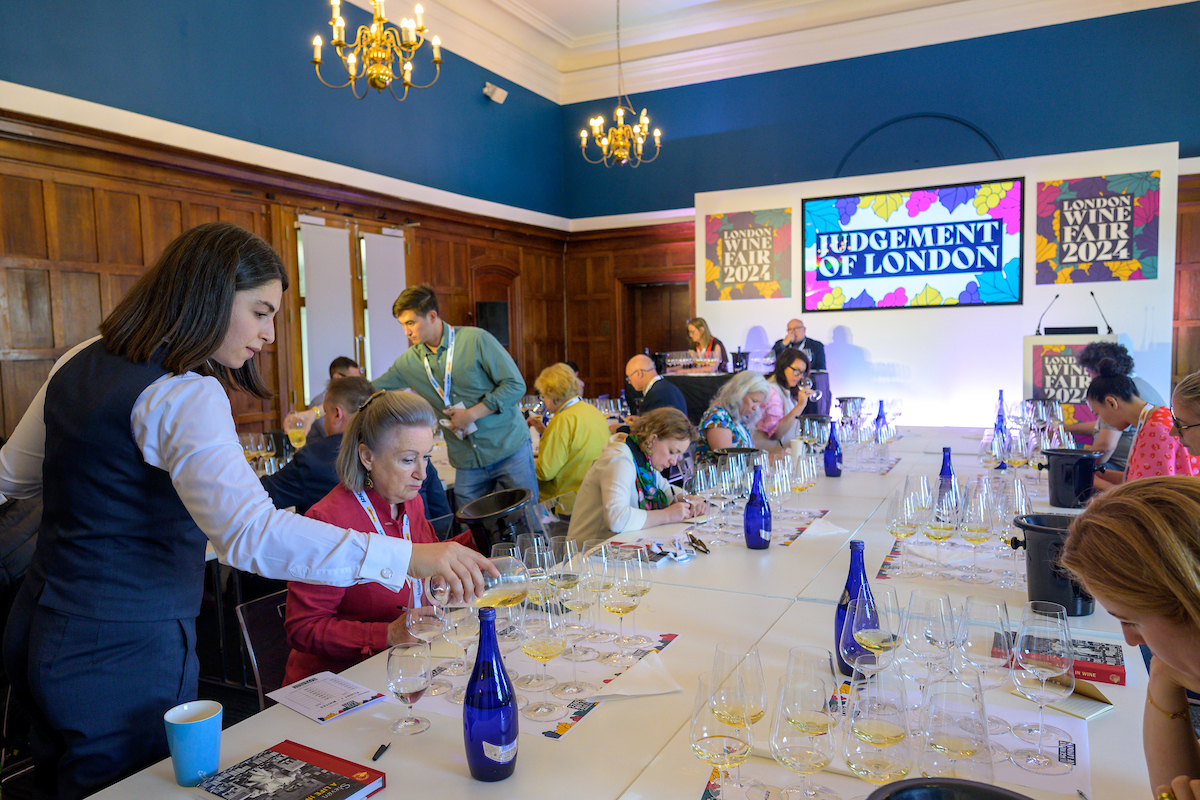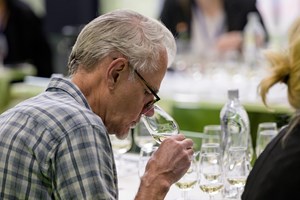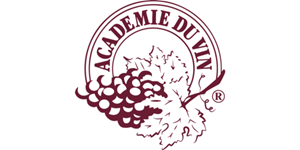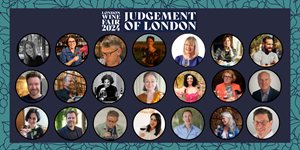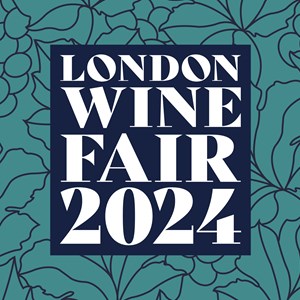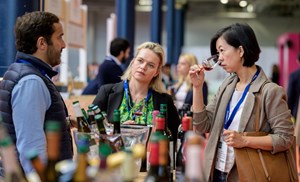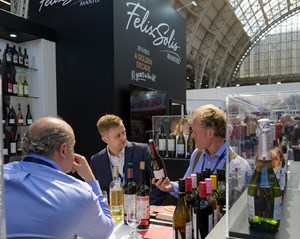London Wine Fair’s Judgement of London took place yesterday, and the results are now in. 32 wines were tasted over a period of four hours by 21 judges, a selection of the UK’s best palates, two-thirds of which were either Masters of Wine or Master Sommeliers. The wines – all of which were decanted and served in Jancis Robinson X Richard Brendon glasses – were tasted in pairs under exam conditions: eight pairs of white wines, followed by eight pairs of red wines; each pairing comprised a European wine with their Rest of World counterpart, matched in terms of style. The judges scored each wine out of ten, which resulted in a grand total for each wine, and a final overall score for European vs. Rest of World.
The wines - amongst the best in the world - were selected by Sarah Abbott MW, MD of Swirl Wine Group and Ronan Sayburn MS, CEO of The Court of Master Sommeliers, who presented the results on Centre Stage with Hannah Tovey, Head of London Wine Fair on Tuesday 21st May 2024. The key findings are as follows:
Top scoring white: Pegasus Bay Riesling, Bel Canto, Waipara, North Canterbury, New Zealand 2011
Runner up: Polish Hill Riesling, Grosset, Clare Valley, Australia 2012
Top scoring red: Hermitage Rouge, Jean Louis Chave, Rhône, France, 2012
Runner up: Château Mouton Rothschild, Pauillac, Bordeaux, France 2009
Top scoring wine: Pegasus Bay Riesling, Bel Canto, Waipara, North Canterbury, New Zealand 2011
European wines: 2,621.5 points
Rest of World: 2,604.5 points
Overall winner: Europe
Difference: 0.65%
The purpose of Judgement of London was to give a snapshot of the fine wine landscape almost 50 years on from the original Judgement of Paris in 1976. Whilst California was the outright winner of the original Paris tasting, in 2024 –with a broader spectrum of wines to better reflect today’s fine wine scene – the results are almost too close to call, with less than a percentage point between the two “teams”.
Sarah Abbott MW commented: “The results from Judgement of London highlight that great wine can and does come from all corners of the world. Winemakers of these wines share so much in common, and the excitement and gratitude that these wines inspire unites and inspires us as a trade.”
Ronan Sayburn MS commented: “From the beginning, it was never about a winner or loser, and the results show that. 50 years ago, there was a definite difference in style; now it is a much more level playing field. The so-called New World were making wines which were for a cool climate style, but in a warm climate. And obviously they had a lot of success, but were they elegant? Since Judgement of Paris, the so-called New World has better adapted to their climates, clones, and what works well. It is no longer the underdog. All these wines tasted on their own are amongst the greatest in the world, and we were asking our judges to choose amongst them.”
Head of London Wine Fair, Hannah Tovey, commented: “The results could barely have been closer, and whilst that all points towards the equal footing of European and Rest of World wines in today’s fine wine market, it is also testament to the pairings selected by Ronan and Sarah. They were bang on in terms of matching. I would like to personally thank everyone involved in what was frankly a Herculean task; sourcing 32 of the world’s finest wines; Ronan and Sarah for their brilliant selections and management; and last but by no means least, the judges themselves, and their extraordinary palates.”
THE WINES
The full list of wines, shown within the pairs and in the order each pairing was tasted is as follows:
WHITE
Riesling
Rest of World: Polish Hill Riesling, Grosset, Clare Valley, Australia 2012
Europe: Trimbach, Riesling Clos St Hune, Alsace, France 2008
Chardonnay
Europe: Cervaro Della Sala, Marchese Antinori, Umbria, Italy 2018
Rest of World: Kistler Chardonnay, Les Noisetiers, Sonoma, USA 2018
Chardonnay
Europe: Corton Charlemagne Grand Cru, Maison Louis Jadot, Burgundy, France 2017
Rest of World: Felton Road Chardonnay Block 6, Central Otago, New Zealand 2017
Blend
Rest of World: Au Bon Climat Hildegard, Santa Maria Valley, USA 2020
Europe: Terre Alte, Livio Felluga, Friuli, Italy 2020
Sauvignon Blanc
Europe: Château Smith Haut Lafitte, Grand Cru Classé, Pessac Léognan, Bordeaux, France 2017
Rest of World: Peter Michael Winery Sauvignon Blanc, L'Apres Midi, Sonoma, USA 2014
Textured
Rest of World: Pegasus Bay Riesling, Bel Canto, Waipara, North Canterbury, New Zealand 2011
Europe: Franz Hitzberger, Grüner-Veltiner Singerriedel, Wachau, Austria 2019
Rhône
Rest of World: Viognier, Tahbilk, Nagambie Lakes, Australia 2011
Europe: St Joseph Blanc Les Oliviers, Pierre Gonon, Rhône, France 2020
Textured
Europe: Quinta dos Roques Encruzado, Dão, Portugal 2014
Rest of World: David & Nadia Chenin Blanc, Skaliekop, Swartland, South Africa 2019
RED
Pinot Noir
Rest of World: Storm Pinot Noir, Ridge, Hemel-en-Aarde, South Africa 2019
Europe: Bonnes Mares Grand Cru, Domaine Dujac, Côtes de Nuits, France 2017
Pinot Noir
Europe: Spätburgunder, Weingut Mayer-Näckel, Ahr Valley, Germany 2019
Rest of World: Hirsch Vineyards Pinot Noir, San Andreas, Sonoma, USA 2019
Cabernet
Rest of World: Promontory, Napa Valley, USA 2019
Europe: Château Mouton Rothschild, Pauillac, Bordeaux, France 2009
Cabernet
Europe: Château Léoville Las Cases, St Julien, Bordeaux, France 2009
Rest of World: Viñedo Chadwick, Maipo Valley, Chile 2015
Syrah
Rest of World: Homage Syrah, Trinity Hill, Hawkes Bay, New Zealand 2018
Europe: Hermitage Rouge, Jean Louis Chave, Rhône, France, 2012
Textured
Europe: Saperavi Qvevri, Quevri Wine Cellar, Kakheti, Georgia 2019
Rest of World: Clonakilla Syrah, Canberra, New South Wales, Australia 2015
Grenache
Rest of World: Torbreck Hillside Vineyard Grenache, Barossa Valley, Australia 2016
Europe: Clos Magador, Priorat, Spain 2019
Cabernet Franc
Europe: Saumur Champigny, Clos Rougeard, Loire, France 2018
Rest of World: Gran Enemigo, Cabernet Franc, Gualtallary, Argentina 2018
THE JUDGES
The 21 judges who participated were:
Elliot Awin, Partner at ABS Wine Agencies
Isa Bal MS, Consultant Sommelier, Trivet Restaurant
Richard Bampfield MW, Wine Consultant
Stephen Brook, Contributing Editor of Decanter and Author
Alistair Cooper MW, Writer, Consultant and Judge
Dawn Davies MW, Buying Director, Speciality Drinks
Gearoid Devaney MS, Director of Flint Wines and Cabotte
Sarah Jane Evans MW, Wine Writer
Tina Gellie, Content Manager for the Decanter brand
Aleesha Hansel, Wine Writer
Daniel Illsley, Founder of Theatre of Wine
Anne Krebiehl MW, Wine Writer
Kathrine Larsen-Robert MS, Head of Fine Wine, Enotria
Adam Lechmere, Publishing Director, Académie du Vin Library
Regine Lee MW, Indigo Wine, Managing Director
Margaret Rand, Wine Writer and general editor of Hugh Johnson’s Pocket Wine Book
Laura Rhys MS, Head of Wine – Communications, Education and Style, Gusbourne
Jancis Robinson MW OBE, Wine Writer of The FT and JancisRobinson.com
Patrick Schmitt MW, Editor-in-Chief, The Drinks Business
Matt Wilkin MS, Director, H2Vin
Clem Yates MW, Founder of English Pink rosé
JUDGE’S COMMENTS
"Fascinating and inspiring tasting that provided a robust riposte to the view that wine styles are becoming more homogenous around the world. Just because it is becoming harder to identify wines as New World or Old World (which this tasting confirmed, at least for me) does NOT mean that we are losing diversity of style and personality. Fine wines, in a dazzling variety of styles, are being made the world over."
Richard Bampfield MW, Wine Consultant
“Blind tasting is a great way of removing any preconceptions, you can only be led by what is in the glass. It was so great to see both the wines of Europe and the rest of the world standing side by side as equals. There were of course favourites, but all the wines tasted stood up to the test. There is definitely a blurring of lines between Europe and the rest of the world, partly driven by climate, partly driven by changing palates and skills but what is clear is that it is this is one of the best times to be in wine.”
Dawn Davies MW, Buying Director, Speciality Drinks
“Highlights for me were Chave Hermitage, Torbreck, Clos Mogador and Clos Rougeard. But the biggest surprises of the day were Cervaro della Sala giving Lafon Meursault vibes, and David and Nadia Chenin Skaliekop which blew me away. We always taste their wines so young, so now my eyes are open to the potential. And a bargain!”
Daniel Illsley, Founder of Theatre of Wine
“What a fabulous and challenging, even mind-bending selection of wines. Kudos to Sarah and Ronan for putting together such a line-up that held many surprises. I am just happy I no longer have to pass blind tasting exams because this was not easy to tell at all.”
Anne Krebiehl MW, Wine Writer
“A fascinating tasting which put an official stamp on what we've all known for years: that in wines at this level, the terms 'New World' and 'Old World', as predicators of style, are pretty much defunct.”
Adam Lechmere, Publishing Director, Académie du Vin Library
“The Judgement of London tasting offered a very rare chance to taste a formidable line-up of cross global wines of similar vein ‘side by side’, based on producers submitting best examples of varietal v regionality cuvées from best vintage stocks available on-hand within the age range issued. This provided great insight to taste exceptional wines blind based on each producers target expression of varietal vs location markers for overall excellence. The main contributing factors for those wines which shined greater than others ‘on the day’ came down to each wine delivering its greatest expression vs overall balance of fruit purity, complexity, textural flow and conveyance on the palate, energy and persistence vs integrated oak and alcohol factors harmonising. All wines poured were served on equal terms with equitable stemware, breathing opportunity and at correct temperature range(s); in years to come some of these wines may well rise above their rivals who shined greater ‘on the day’, but for this day the wines which shined best did so due to being ready to perform.”
Matt Wilkin MS, Director, H2Vin
THE SCORING SYSTEM
Two scoring systems were used: plurality voting, whereby each judge’s scores are added up to give a total and The Borda Count, an explanation of which is below. The two systems were crossed checked to give the ultimate rankings for each wine.
The Borda Count is a nondictatorial positional voting method which ranks the wines in order and uses a preferential voting scheme to aggregate the rankings. The result has less bias than plurality voting which can give greater weight to judges who put plenty of scatter into their scores. The Borda Count was used at the 30th anniversary tasting in May 2006.
Judgement of Paris
The wine tasting which became known as Judgement of Paris took place on 24th May 1976. It was organised by Steven Spurrier, who at the time ran the Les Caves de la Madeleine wine merchant in Paris. The panel comprised 11 judges from the French wine trade. The red flight featured wines from Bordeaux and Napa, whilst the white flight featured Burgundy and Napa.
Stag’s Leap Wine Cellars 1973 Cabernet Sauvignon and Chateaux Montelena 1973 Chardonnay triumphed, coming out top in their respective categories.
